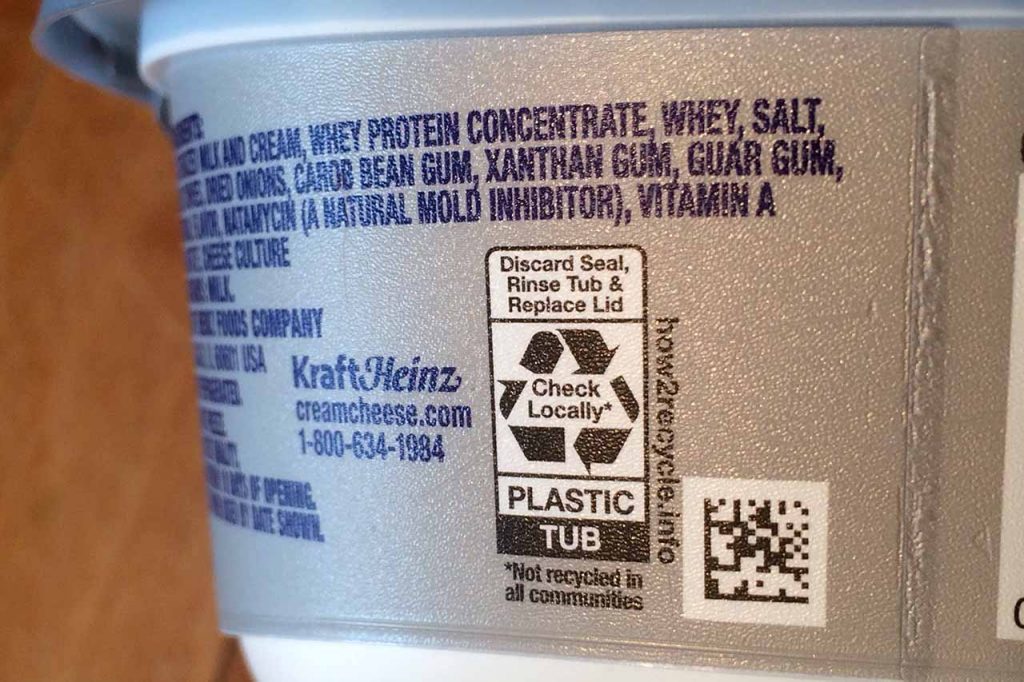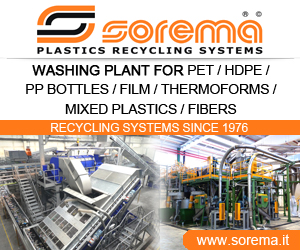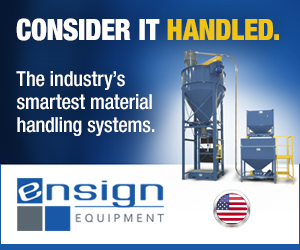
How2Recycle Staff emphasize that knowing what not to recycle is just as important as knowing what to recycle. | Dan Leif/Resource Recycling, Inc.
Editor’s note: The How2Recycle labeling initiative, a project of the Sustainable Packaging Coalition, recently downgraded the recyclability of several plastic types. Shortly after, environmental advocacy group Greenpeace released a report charting discrepancies in how products are labeled for recyclability, and how frequently they are actually recycled.
In light of the developments, Plastics Recycling Update queried How2Recycle for the organization’s response. The following was authored by the team at How2Recycle.
It’s tempting sometimes to focus on the negative.
It’s perfectly acceptable to be disappointed that we have a fragmented, difficult to understand recycling system. It would be so much easier if recyclability didn’t change over time, and if recycling was the same in all cities and states. But it’s not. Recycling in the U.S. is complex. In addition, our recycling industry is in transition, adjusting from the loss of China’s markets and building to meet the needs of recent brand commitments for recycled content.
We choose transparency and education. The How2Recycle label helps consumers identify what to do with each part of a package. We’re putting that information right in front of consumers to empower them to know when an item may not get recycled or when the sleeve label needs to be removed. The How2Recycle label also educates brands on what good design looks like when they apply for each label.
It is true that some materials are easier to recycle than other materials. What is more important than the resin type for commonly acceptable materials is the comprehensive package design that includes labels, color and attachments. Continued attention to designing packaging for recyclability will be critical to build strong recycling streams for these materials into the future.
How is recyclability determined? How2Recycle assesses recyclability based on compatibility with the entire recycling process, including acceptance in collection programs but also encompassing considerations surrounding sortation, reprocessing and end-market demand. This is aligned with Federal Trade Commission guidelines (aka Green Guides) for what environmental marketing claims are permissible, to prevent consumer deception.
In order to avoid consumer deception and increase the transparency, reliability and completeness of recyclability claims, all How2Recycle members should be well-versed in the Green Guides. Each How2Recycle label is backed by scientifically credible data so that the general public can rely on a consistent, standardized labeling system run by a 501(c)(3) environmental nonprofit to know how to recycle more accurately.
Recently the recyclability designations for certain categories of plastic packaging were adjusted based on new research. The How2Recycle program continuously leverages the best available data to support accurate recyclability designations and encourages brand owners to be transparent and thorough when communicating recyclability. Many products carry multiple labels, including the “Not Yet Recycled” label, to cover all the components of the packaging. This label applies to items that are contaminants to the recycling stream, or where fewer than 20% of Americans have the ability to recycle that item in their community. Knowing what not to recycle is just as important as knowing what to recycle, so the “Not Yet Recycled” label helps prevent contamination in the stream and confusion for consumers.
The “Check Locally” label is a qualified claim that directly states, “Not recycled in all communities.” The qualifier suggests that some aspect of the standard for recyclability may not meet the requirements for an unqualified claim, including when there is uncertainty or volatility in the substantiation data behind the claim. This informs the consumer that there is a chance that the item may not be recycled in their community, but is also an opportunity for regional education for items that vary in acceptance in collection programs. Consumers can check through the URL on the label to see if the items with the “Check Locally” label are accepted in their community or call their community program directly to ask questions.
In January 2020, How2Recycle moved rigid polypropylene packaging from “Widely Recycled” to “Check Locally,” using data collected in December 2019 with the methodology of our SPC Centralized Availability of Recycling Study 2016. This decision was made because while access to recycle polypropylene was found to be just above 60%, some communities are landfilling and incinerating the material post-collection. This presents sufficient uncertainty to require a disclaimer per FTC guidance. Polypropylene still has reprocessability and strong end markets.
PET thermoforms were also moved to the “Check Locally” category because access to recycle these items fell below the 60% threshold set out by FTC.
The recycling industry is currently still adjusting to the evolving international landscape of markets for recyclables, and recyclability claims may continue to change as capacity is built in North America. New corporate recyclability goals include aggressive use of recycled content that will drive improvements in infrastructure and create new market opportunities.
Given the problems with our recycling system and the complexity of packaging, challenging the companies that aren’t labeling their packaging at all might be the most effective strategy for other organizations and consumers interested in these issues.
We expect that the current qualified claims will move back to “Widely Recycled” in the future.
The views and opinions expressed are those of the author and do not imply endorsement by Resource Recycling, Inc. If you have a subject you wish to cover in an op-ed, please send a short proposal to [email protected] for consideration.
More stories about collection
- NexTrex program boosts local film recovery efforts
- How MRFs develop their accepted material lists
- Research, programs improve film recycling access



